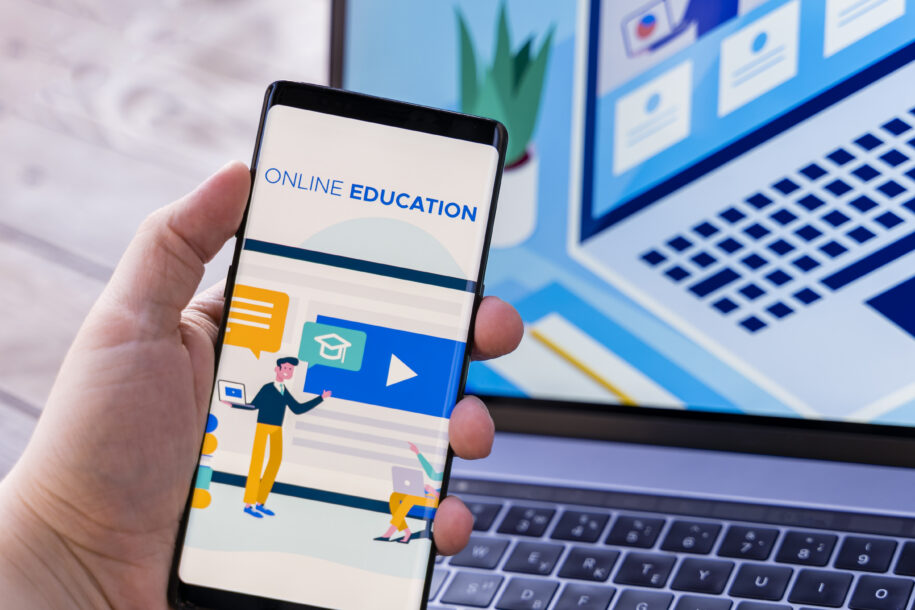Integrating technology has become pivotal in reshaping traditional learning methods in the rapidly evolving education landscape. Educational app development has emerged as a transformative force, offering innovative solutions to engage and empower learners of all ages. To ensure the success of an educational app, developers must carefully consider a myriad of features that go beyond conventional functionalities. In this exploration of the key features a successful educational app must have, we delve into the critical components that contribute to an enriching and effective learning experience. From interactive content delivery to personalized assessments, these features play a crucial role in shaping the future of educational app development, fostering an environment where knowledge acquisition aligns seamlessly with technological advancements. Join us on this journey as we uncover the essential elements that elevate an educational app from merely functional to a powerful tool for learners and educators alike.
Importance of Educational Apps
The significance of educational apps in the contemporary learning landscape cannot be overstated. With the widespread integration of technology in education, apps for education have emerged as powerful tools that are reshaping traditional teaching paradigms. These digital resources bring many benefits, enhancing the educational experience for learners of all ages. Let’s explore the importance of educational apps, emphasizing the crucial role they play in the realm of learning:
Accessibility and Convenience:
Educational apps provide access to a wealth of information anytime and anywhere. Learners can engage with educational content at their own pace, breaking free from the constraints of traditional classrooms and rigid schedules. This accessibility enhances the learning experience for individuals with diverse lifestyles and commitments.
Interactive Learning Opportunities:
Apps for education often incorporate interactive features such as quizzes, games, and simulations, transforming passive learning into an engaging and participatory experience. This interactivity captures learners’ attention and reinforces understanding through hands-on activities.
Tailored Learning Paths:
One of the standout features of educational apps is their ability to offer personalized learning experiences. These apps analyze user performance and adjust content delivery through adaptive algorithms, creating customized learning paths that cater to individual strengths, weaknesses, and preferences.
Motivation through Gamification:
Gamification elements embedded in educational apps, such as rewards, badges, and progress tracking, motivate learners. By introducing game-like features, these apps make learning enjoyable, encouraging sustained engagement and enthusiasm among users.
Diverse Learning Resources in Educational Apps:
Educational apps are repositories of diverse learning resources, including multimedia content, e-books, videos, and interactive modules. This variety accommodates different learning styles, allowing users to explore concepts through various mediums and approaches.
Instant Feedback and Assessment:
Apps for education offer real-time feedback, allowing learners to assess their understanding immediately. This instantaneous feedback loop facilitates a more efficient learning process, enabling users to promptly identify and address areas that require further attention.
Global Connectivity through Educational Apps:
Many educational apps facilitate global connectivity, creating virtual learning communities that transcend geographical boundaries. Learners can connect with peers from around the world, fostering cultural exchange, collaborative learning, and the sharing of diverse perspectives.
Preparation for the Digital Future:
In an era dominated by digital technology, proficiency in digital tools is essential. Educational apps impart subject-specific knowledge and equip learners with crucial digital literacy skills. This preparation for the digital future is instrumental in ensuring that students are well-equipped for the challenges of the evolving workforce.
Related Article: Features, Types, and Trends for eLearning App Development
Top Features of Educational Mobile Apps
In the rapidly evolving landscape of learning app development, the success and efficacy of educational mobile apps hinge on integrating key features that cater to the diverse needs of users. Here, we delve into the top features of educational mobile apps, emphasizing their significance in the realm of e-learning app development:
User-Friendly Interface:
An intuitive and user-friendly interface is paramount for an educational app’s success. A well-designed interface ensures that users, including students and educators, can navigate the app effortlessly, making the learning experience seamless and enjoyable.
Adaptive Learning Paths:
Adaptive learning algorithms analyze user performance and tailor the content delivery based on individual strengths and weaknesses. This feature ensures a personalized learning experience, allowing users to progress at their own pace and focus on areas that need reinforcement.
Interactive Content:
Incorporating interactive elements, such as quizzes, games, and simulations, engages learners actively. Interactive content sustains attention and promotes a deeper understanding of the subject matter by encouraging hands-on exploration and problem-solving.
Multimedia Integration:
Educational apps with multimedia elements, such as videos, animations, and audio content, provide a richer and more immersive learning experience. These diverse formats cater to different learning styles and enhance the overall comprehensibility of the material.
Real-Time Feedback and Assessments:
Immediate feedback on assessments is crucial for effective learning. Educational apps that offer real-time feedback help users gauge their understanding instantly, allowing them to address misconceptions promptly and reinforcing the learning process.
Progress Tracking and Analytics:
Progress tracking features enable users to monitor their learning journey. Analytics tools provide valuable insights into user performance, helping learners and educators identify areas for improvement and track overall progress over time.
Collaborative Learning Tools:
Many educational apps include features that facilitate collaboration among users. Discussion forums, group projects, and collaborative activities create a sense of community, allowing learners to engage with peers, share insights, and benefit from diverse perspectives.
Offline Access:
Offline access is crucial, particularly in regions with limited internet connectivity. Educational apps that allow users to download content for offline use ensure continuous access to learning materials, promoting flexibility and inclusivity.
Security and Privacy Measures:
Given the sensitive nature of educational data, robust security and privacy measures are imperative. Educational apps must implement encryption, secure authentication, and data protection protocols to safeguard user information and maintain trust.
Cross-Platform Compatibility:
Educational apps should be compatible with various devices and operating systems to cater to a diverse user base. Cross-platform compatibility ensures users can access the app seamlessly across smartphones, tablets, and other devices.
Customization and Personalization:
Providing users with the ability to customize their learning experience enhances engagement. Features such as customizable profiles, learning paths, and preferences allow users to tailor the app to their needs and preferences.
Integration with Learning Management Systems (LMS):
Integration with popular Learning Management Systems ensures a smooth workflow for educators and institutions. This feature enables seamless data transfer, simplifying the management of courses, assignments, and assessments.
Conclusion
The pivotal features explored herein underscore the essence of creating a successful and impactful learning tool in education mobile app development. A user-friendly interface sets the stage for accessibility, while adaptive learning paths and interactive content promote engagement and understanding. Real-time feedback, progress tracking, and analytics empower users to chart personalized learning journeys. Collaborative tools foster a sense of community, transcending geographical boundaries. Security measures safeguard sensitive educational data, ensuring user trust.
Customization and integration with Learning Management Systems enhance adaptability and administrative efficiency. In the dynamic landscape of education mobile app development, these features collectively form the backbone of an app’s efficacy, fostering a transformative learning experience. As technology continues to shape education, incorporating these key features remains paramount in creating apps that meet and exceed the evolving needs of learners and educators globally.

